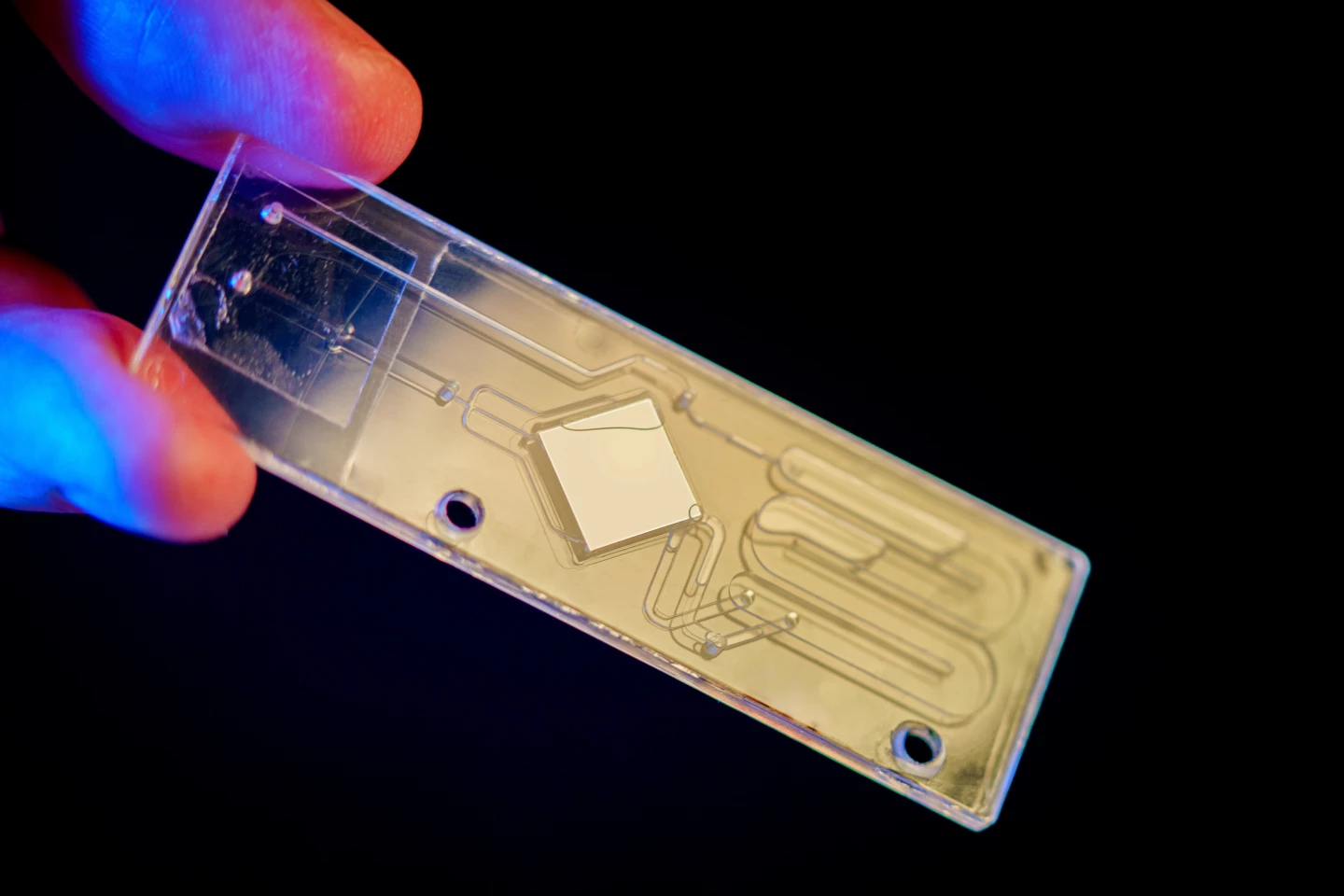A new technique, which involves melting bacterial DNA found in blood samples, could deliver diagnoses of potentially fatal infections faster than ever before. Results may be obtained in a few hours, instead of days.
Ordinarily, in order to see if harmful bacteria are present in someone's bloodstream, a sample of their blood is placed in a growth medium in a Petri dish. If the bacteria are indeed in the blood, they will proceed to grow. It can take anywhere from 15 hours to several days, however, before they've grown to detectable levels.
Led by Prof. Stephanie Fraley, scientists from the University of California San Diego have been exploring a quicker and more accurate alternative.
They developed a microfluidic chip on which a small blood sample is deposited and then heated to a temperature of 50 to 90 ºC (122 to 194 ºF). If any bacteria are present in the fluid, the heat causes their DNA molecules to melt. As those molecules disintegrate, their double-helix strands unwind in a telltale pattern which is unique to their sequence of nucleotides.
In order to ascertain that pattern, a special dye is added to the sample. It causes the unwinding process to produce fluorescent light. By analyzing the properties of that light, a signature known as a melting curve is obtained. That melting curve is then compared to others that are already known to be those of specific bacteria.
Once a match is found, the bacteria in the blood sample is identified. The whole process takes no more than six hours. This kind of speed wouldn't be possible if it weren't for the use of custom machine-learning algorithms that identify and discard the melting curve of the patient's own DNA, along with other "background noise."

In a test of the technology, blood samples drawn from 17 children suspected of having potentially fatal sepsis infections were analyzed. Not only did the new technique exactly match results obtained by traditional methods, it also didn't produce any false positives. Such is not always the case with other methods such as nucleic acid amplification, which simply boost the signatures of all DNA present.
"This is the first time this method has been tested on whole blood from patients suspected of having sepsis," said Fraley. "So this study is a more realistic preview of how the technology could perform in real clinical scenarios."
A paper on the research was recently published in The Journal of Molecular Diagnostics.





